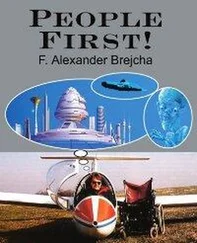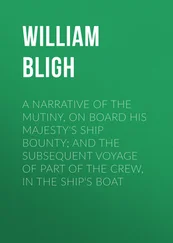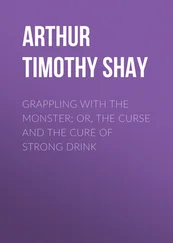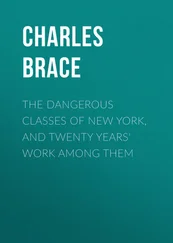Mattias Berg - The Carrier
Здесь есть возможность читать онлайн «Mattias Berg - The Carrier» весь текст электронной книги совершенно бесплатно (целиком полную версию без сокращений). В некоторых случаях можно слушать аудио, скачать через торрент в формате fb2 и присутствует краткое содержание. Город: London, Год выпуска: 2019, ISBN: 2019, Издательство: MacLehose Press, Жанр: Триллер, на английском языке. Описание произведения, (предисловие) а так же отзывы посетителей доступны на портале библиотеки ЛибКат.
- Название:The Carrier
- Автор:
- Издательство:MacLehose Press
- Жанр:
- Год:2019
- Город:London
- ISBN:978-0-85705-788-4
- Рейтинг книги:4 / 5. Голосов: 1
-
Избранное:Добавить в избранное
- Отзывы:
-
Ваша оценка:
- 80
- 1
- 2
- 3
- 4
- 5
The Carrier: краткое содержание, описание и аннотация
Предлагаем к чтению аннотацию, описание, краткое содержание или предисловие (зависит от того, что написал сам автор книги «The Carrier»). Если вы не нашли необходимую информацию о книге — напишите в комментариях, мы постараемся отыскать её.
The Carrier — читать онлайн бесплатно полную книгу (весь текст) целиком
Ниже представлен текст книги, разбитый по страницам. Система сохранения места последней прочитанной страницы, позволяет с удобством читать онлайн бесплатно книгу «The Carrier», без необходимости каждый раз заново искать на чём Вы остановились. Поставьте закладку, и сможете в любой момент перейти на страницу, на которой закончили чтение.
Интервал:
Закладка:
Then Sixten pressed on the edge of the control panel, which hummed around in a half circle. What now appeared was a seemingly complete sketch of the Inner Circle. Not only all the connecting passages but also the chutes—marked with black blobs—and side passages shown as dashed lines through the bed-rock.
“We needed a detailed plan of this underground landscape: the cartographers produced a minor miracle. Don’t you think, Erasmus?”
I nodded, waiting for more.
“But this wasn’t actually what I wanted to show you.”
Sixten began to search with his fingers behind the map, between the paper and the metal plate itself. Had to reach around the whole control panel before he managed to get the object out.
“It was this.”
He put a key in my hand—it bore the same letters as on the red trap-door: “F.E.” The double-sided sticky tape, which had been used to attach the key to the back of the map, stuck to the palm of my hand.
“It’s as if it’s been lying here, waiting for you. Erasmus Levine, of all people. What were the odds of that, do you think?”
I could have asked what sort of key it was, what there might be under the trap-door in the unlit tunnel, why I was the chosen one. But I did not—because everything about Sixten said that there was no time now. He looked at his watch and took a deep breath, before covering up the control panel with the dryer and pushing the washing machine aside again. I dropped the key into the zipped pocket of my waterproof pants and followed him through the hole leading back underground.
“Time to deliver you into Ingrid’s care, so I can return here before Aina wakes up, always on the dot of five. As I said, she doesn’t like me digging around in history. And certainly not at this time of night.”
2.11
I had a hypothesis, but not much more.
As soon as Sixten had left me, closed the last protective door from the outside, I took my dissertation from the pocket of my combat pants. Ingrid was fast asleep: she did not seem to have woken up to register the fact that I had returned.
My watch showed 04.41. The display case with the crumbling apes was lit up thanks to Sixten’s control panel. The gorilla seemed to fix its one good eye in the direction of my bunk. It would not be easy to get any sleep—but I was not even trying.
I had not leafed through my dissertation for more than a decade. Not since Ingrid had without warning left the university and I became a part of NUCLEUS, was moved to the little Catholic University and buried myself in Sister Jane’s dark library, met Amba, started the family, had the children, one after the other, as if following a model set up by someone else. I could hardly recall anything of what I had written.
I turned the pages, intently examining the sentences in search of one particular thing—though I could no longer remember if I had mentioned it in the dissertation.
Introduction
It started with Einstein’s discovery in 1905, as astonishing as it was fateful. Three letters, one digit, an equals sign. E=mc 2. The formula for both the sun’s life span and the end of the world.
In a dizzying and seemingly predetermined sequence of events, from Einstein’s equation up to the end of the Second World War, his theory would become the most brutal fact. Radiation, decomposition and radioactivity became high scientific fashion during the first half of the twentieth century. The indivisible atom suddenly appeared anything but reliable. Each discovery came hard on the heels of the last: reality itself seemed literally to be collapsing before the very eyes of the researchers.
In due course the formula was proved in the most macabre mathematical experiment ever to be carried out, down to and including the very skin of the civilian population, all of those who were burned into black lumps, first in Hiroshima and then Nagasaki. The two atom bombs over Japan were and remain the only practical tests of Einstein’s equation.
The Second World War was decisive for mankind in learning the riddle of the Bomb. There were so many apparently separate factors—but with the benefit of hindsight they cannot be viewed as anything other than linked, orchestrated, like a symphony of fate.
Not least in playing a crucial role were the stepped-up Jewish laws in many parts of Europe. The Italian Enrico Fermi was one example of all these intellectuals who were first dispersed and then united, in the service of the American government. Having received the Nobel Prize in Stockholm in 1938, Fermi did not return to his native country, the by now Fascist Italy, but instead immigrated with his Jewish wife to America and in due course joined the Manhattan Project in Los Alamos. Many brilliant nuclear physicists, who were themselves or whose close relatives were of Jewish heritage, took the same path. Leo Szilard from Hungary, the Dane Niels Bohr, and Einstein himself.
Yet according to available sources, Einstein never became directly involved in the creation of the atomic bomb. Rather he exploited the platform of his pacifism to try to persuade the President not to abuse the power he himself had foretold with his formula.
But the principal riddle remains Lise Meitner. At the outbreak of the Second World War, and following the death of Marie Curie in 1934, this Austrian researcher with Jewish heritage was the only really prominent woman within nuclear physics, and the one exception other than Einstein to the intellectual diaspora to Los Alamos. The accepted explanation is that she refused to work on the development of so terrible a weapon. Instead, she fled to Sweden in 1938 and after the war became a Swedish citizen.
The remarkable appellation “The Mother of the Atomic Bomb”, for somebody who was said never to have worked on it, was given to her above all because of a mythical walk which she took over the ice in Kungälv on the Swedish west coast in 1939. It was said to have been on that very occasion that Meitner and her nephew Otto Robert Frisch realized how to understand the nature of nuclear fission. How, from one single uranium atom, one could derive two barium atoms.
That a single element could in this way be transformed into another was theoretically unthinkable and seemed to be nothing more than a transmutation, pure alchemy. Everything that mankind had dreamed of since antiquity and the time of the old magicians.
According to the myth, during their ardent conversation, Meitner and Frisch had sat down on a fallen tree in the forest. Brushed away the snow and taken out paper and pen.
What followed was a key moment in the history of science. On Meitner’s piece of paper the picture grew of a balloon filled with liquid: how it slowly expanded before finally bursting. They called this process “fission”, a term which until then had stood only for how a biological cell splits itself in a natural and organic way.
Six years later the world was to learn what this fission could bring about. That it was in practice not at all gentle and organic—it was unthinkably hard and violent. Only days after the detonation of the bomb over Hiroshima, the world’s press was lining up outside Lise Meitner’s boarding house in Leksand in the province of Dalarna, three hundred miles north of Stockholm, where she was taking her summer vacation. It was the beginning of August 1945. So it was Meitner who had to explain the theoretical principles of the new superweapon: Meitner who there and then was christened “The Mother of the Atomic Bomb” in the headlines.
But there is nothing even in these interviews from Leksand that says anything in more detail about what Meitner was doing in Sweden, what sort of trials she was conducting with the aid of experimental reactor R.1 in the massive rock chamber under Stockholm’s Kungliga Tekniska Högskolan. Scarcely a trace remains of her research. After she received Swedish citizenship in 1949, there is more than a ten-year gap in the sources, before, in 1960, it is known that Meitner moved to live with relatives in Oxford and in due course died after a succession of strokes.
Читать дальшеИнтервал:
Закладка:
Похожие книги на «The Carrier»
Представляем Вашему вниманию похожие книги на «The Carrier» списком для выбора. Мы отобрали схожую по названию и смыслу литературу в надежде предоставить читателям больше вариантов отыскать новые, интересные, ещё непрочитанные произведения.
Обсуждение, отзывы о книге «The Carrier» и просто собственные мнения читателей. Оставьте ваши комментарии, напишите, что Вы думаете о произведении, его смысле или главных героях. Укажите что конкретно понравилось, а что нет, и почему Вы так считаете.












